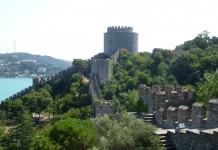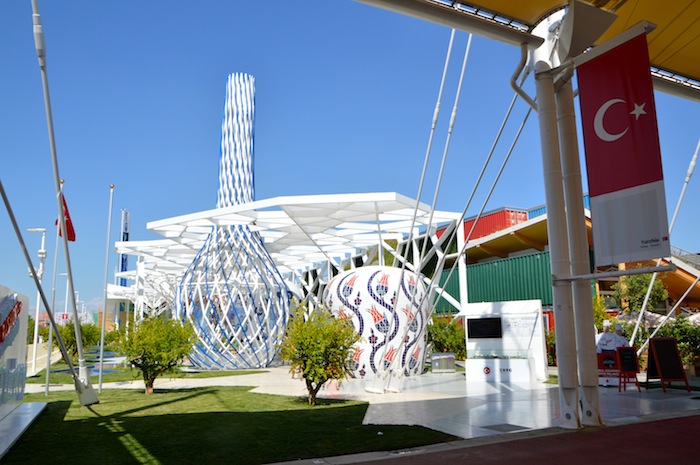
The World Expo, held this year in Milan, is one of the foremost opportunities for states to dazzle the rest of the world. This year, tourists flocked to Milan in the tens of millions, and states, knowing this, prepared accordingly. On display were pavilions that had 3D theatres, holograms, vertical rotating gardens, natural oases and indescribably delicious restaurants. The theme in Milan was “Feeding the Planet, Energy for Life,” and each participating country (of which there are over 100), attempted to take that concept and put their own unique spin on it.
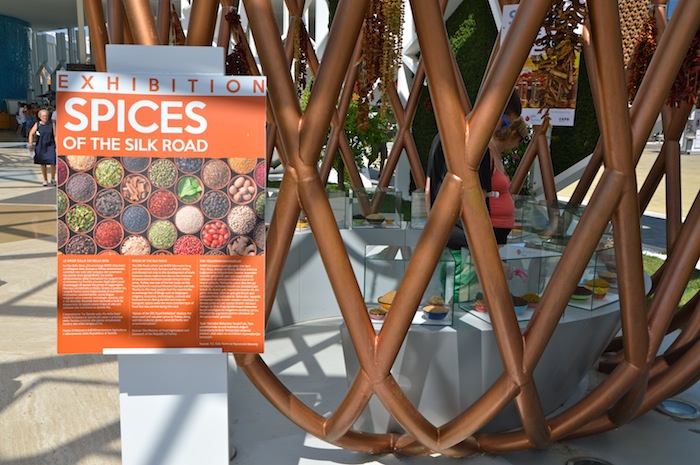
Turkey’s thematic approach, “Digging into History for Future Food” fit in line very nicely with the Expo’s overarching theme. Generally speaking, their pavilion wasn’t one that everyone was talking about, but it was put together beautifully and had definite aesthetic appeal. For me, it was especially interesting because I was processing their pavilion in a whole different way. Instead of passively taking in the knowledge and information the pavilion was sharing, I was actively seeing the pavilion as a microcosm of the life that I had come to know in Turkey. I was, if you will, “reading between the lines,” the conclusions of which I’d only be too happy to share.
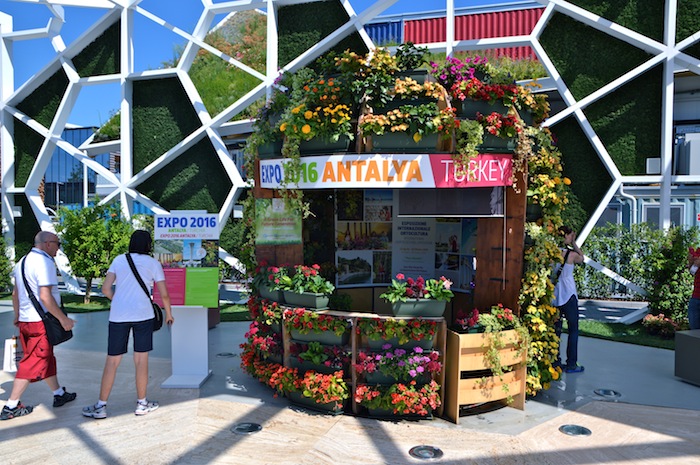
4 Ways the Pavilion was a Microcosm for My Life in Turkey
1. A Concerted Hospitality
My girlfriend, Briana, and I visited dozens of pavilions while we were at the Expo, and the hospitality at the Turkish pavilion was easily the most palpable. I think it was largely due to the sizable number of staff on hand, who were carefully arranged around the pavilion. You would enter a room, glance behind you, and out of nowhere a particular staff member would be there to ask if you had any questions about what you were looking at. I distinctly remember this happening when I was investigating the video exhibition on “The Mysteries of the Palace Cuisine.”
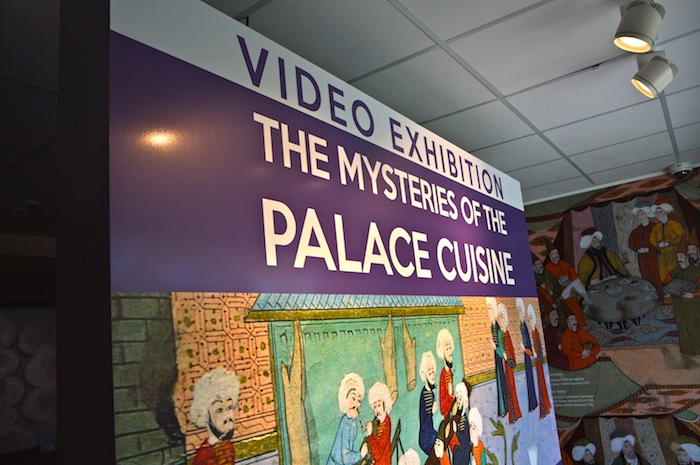
Momentarily, I was teleported back to a meyhane in Istanbul, enjoying a meal at an overstaffed restaurant with servers near the bar, looking for raised hands that might be requesting more rakı. Or maybe I was, by chance, entering a family restaurant on a crowded throughway, yet unaware that I would end up in a friendly conversation in which I would be kindly pressured to have another çay. It’s a concerted and careful hospitality, and something Turks in Turkey (and Turks working in Italy at Turkey’s pavilion) don’t take lightly. And, frankly, it’s a warm subplot of life here.
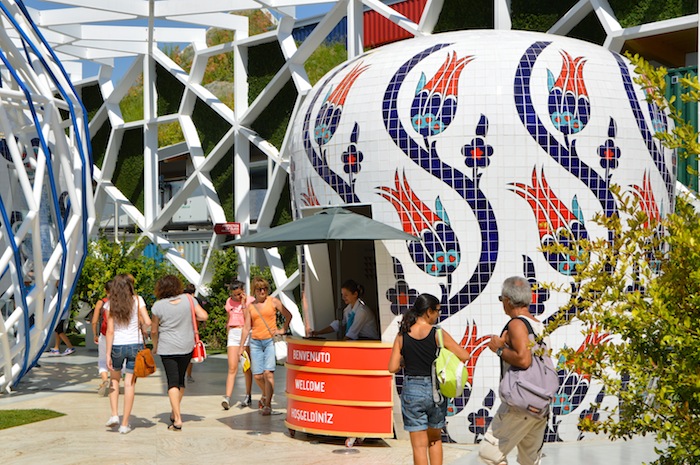
2. The Importance of Design
The Turkish pavilion was carefully and meticulously designed to send clear signals and messages to onlookers. Not far from the front stood an artistic nod to Turkish pottery, a large, swirling version of an Iznik vase that couldn’t be missed. Venturing deeper into the pavilion, the theme of nar (pomegranate) was woven into the design of everything. One of the aforementioned kind attendants told me that the pomegranate was meant to symbolize “diversity in unity,” as well as “fertility” and “abundance.” It was meant to be a message of hope to the international community, at what is a crucial time in the country itself.
So too is Turkey strewn with messages through its design and architecture. The windmills poking over Alaçatı allude to a Greek influence in that region, the cave houses and underground cities near Cappadocia tell a clear story of a persecuted early Christian population, and the modern mega homes near Bodrum loudly scream of a burgeoning upper class in the country. And let’s not forget the ubiquitous mosques, whose design leaves an indelible impression.
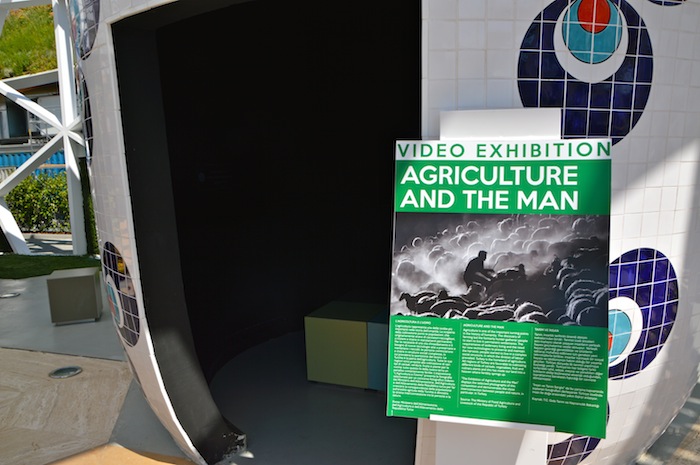
3. Everything Going Almost to Plan
On the whole, Turkey’s pavilion was well run and, from afar, it looked like it was smooth sailing. And, for the most part it was, but not everything had gone quite according to plan. I was leisurely strolling through the pavilion when a large ceramic viewing room caught my eye. It turned out to be another video exhibition, but this time on “Agriculture and the Man.” As I stepped out of the hot Italian sun into the darkened room, I heard silence. The screen, it seemed, was out of commission.
Now, it wasn’t a big deal, and quite honestly it didn’t bother me in the slightest. Yet visitors from other countries seemed to be perplexed and bothered by it. It occurred to me that perhaps I’d come to accept that things in Turkey rarely, if ever, go according to plan. It was a moment where I remembered that the occasional traffic, delayed bus or extended wait for visas might be frustrating, but they don’t supersede the joys of the bigger picture – the blues of the Bosphorus, the fish restaurants strewn along the Aegean or even an early afternoon taste of kahvaltı just down the street from you. There will be small nuisances, yes, but it’s just part of the deal. A deal, I may say, that I’d make a thousand times over.
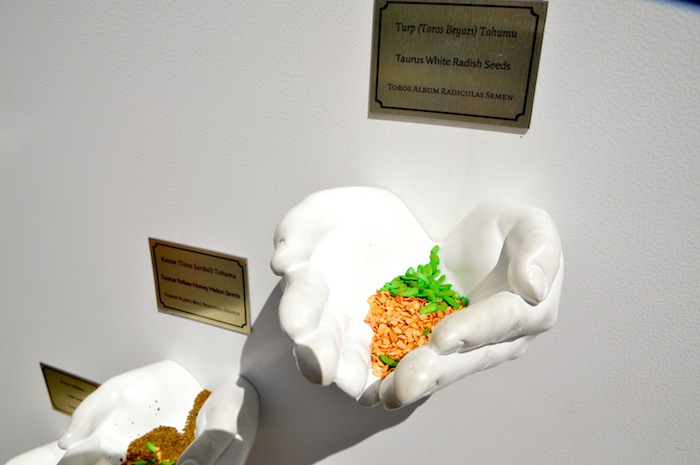
4. The Impact of Cuisine
Based on the fact that the entire Expo was confronting ideas around food, you may be wondering just how much “reading between the lines” I had to do to think about how food relates to my life in Turkey, or is indeed a microcosm for said life. Initially, I noticed the large Turkish restaurant that graced the pavilion with its presence, and it’s true that the smells brought me back. However, it wasn’t the food itself that got me thinking, rather it was the tea garden, which was located in a pleasantly shaded area near the back of the pavilion, deliberately covered yet still open.
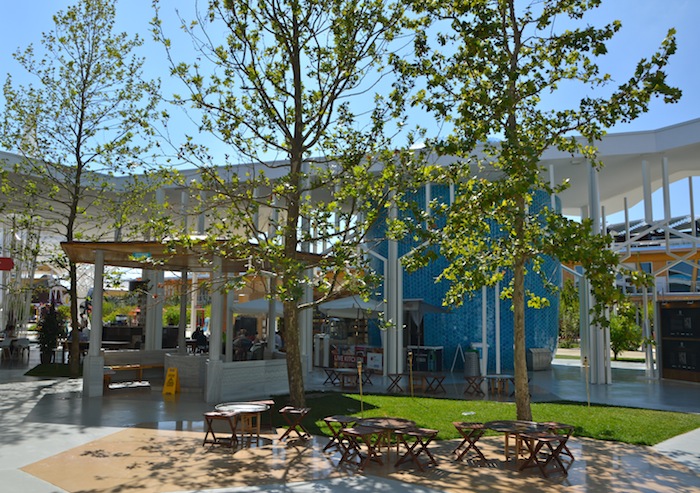
I realized that I owe a lot to tea, or çay as we know it in Turkey. Much like in the pavilion, many places to stop and have a tea, and perhaps a touch of food, are places I’ve found to be a blur between public and private life. The tables often spill out of the restaurant into the streets, and thus invite you into a private establishment to enjoy the public life of the country. Çay for me has been my great spur to socialize, and has allowed me an excuse to create intimate relationships over many broken Turkish conversations. I saw the tea garden in the middle of the pavilion as an open invitation because of what I had experienced in the country. It was a place I could stop to publicly show appreciation for the understanding I had gained, and to pay tribute to the Turkish culture around cuisine, which has had an enormous impact on how I’ve experienced and adapted to Turkey.
—
My visit to the Turkish pavilion at the Expo was a true reminder that we all have a different lens with which we view the world around us. Perhaps what most intrigued me was that no matter what sort of image a country tries to portray with a pavilion, what really shines through is what they can’t necessarily control. The South Korean pavilion was flashy, filled with neon lights and technologically advanced, the American pavilion spared no expense and was decidedly entertaining, and the German pavilion was extremely well organized and thought-out. And, the Turkish pavilion was, for me, an active reminder of a country I’d grown to love, for a long list of reasons both infinitely large and strikingly minute.
Christopher Mitchell is a contributor to Yabangee. Check out his travel blog Heart & Seoul.








